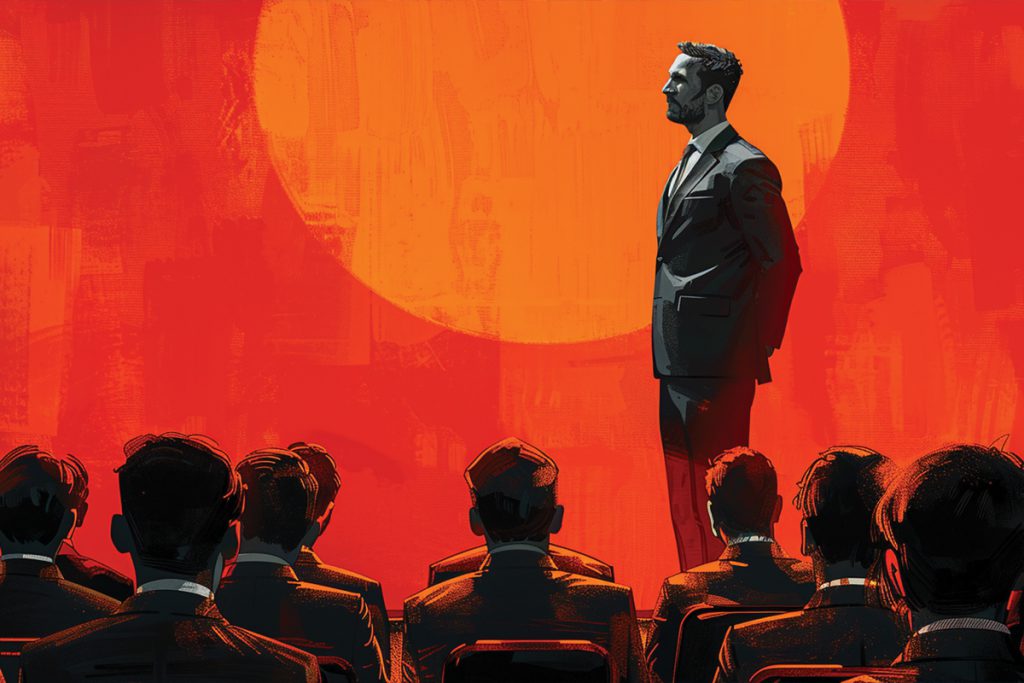Learn to cast off the shackles of conformity, and ride the waves of these discontinuities if you are to rise to the challenge of a changing world order
Words by Karan Karayi
Ah, the joys of leading in the 21st century – a time when the ground is constantly shifting beneath our feet, and the rulebook we once knew has been tossed squarely out the window. Gone are the days of neatly defined roles, hierarchies, and the comfort of predictable business models. Welcome to the wild, wild west of the boundaryless world, where the only constant is change.

Leaders find themselves at the epicenter of a seismic shift, where the very nature of work, the workforce, and the workplace is being redefined before their eyes. No longer can tried-and-true methods that served us well in the past be relied on. Instead, one must be prepared to navigate a landscape fraught with five key discontinuities that will test the mettle of leaders and drive a redefinition of leadership approaches.
Discontinuity #1: Radical Science and Technology
In the blink of an eye, the pace of technological advancement has become dizzying, leaving leaders struggling to keep up. From the exponential growth of artificial intelligence to the mind-bending breakthroughs in quantum computing, the future is arriving at breakneck speed. Those at the helm must be nimble enough to harness these technological marvels, lest they risk being left behind in the digital dust.
Embracing the Exponential Curve
The rate of technological change is no longer linear – it’s exponential. What once took decades to achieve can now be accomplished in a matter of years, or even months. Leaders who fail to recognize and adapt to this new reality risk being caught flat-footed, unable to capitalize on the opportunities that lie ahead.

Fostering a Culture of Innovation
In this changing milieu, innovation is the lifeblood of success. Leaders must cultivate an environment that encourages experimentation, rewards calculated risk-taking, and celebrates failure as a stepping stone to greater achievements. Only by fostering a culture of innovation can they stay ahead of the curve and ensure organizations remain relevant in the face of relentless technological disruption.
Discontinuity #2: Shift to Stakeholder Capitalism
The traditional model of shareholder primacy is giving way to a new paradigm – stakeholder capitalism. In this emerging landscape, leaders must grapple with the reality that their decisions and actions no longer exist in a vacuum. Every choice they make has far-reaching consequences, impacting not just the bottom line, but the well-being of employees, communities, and the planet as a whole.
Balancing Competing Priorities
Caught between the demands of profitability and the growing calls for social and environmental responsibility, leaders have to strike a delicate balance. This requires a level of emotional intelligence and strategic foresight that transcends the traditional boundaries of business acumen.
Embracing Transparency and Accountability
In the age of stakeholder capitalism, leaders must be willing to open the curtain and invite scrutiny. Transparency and accountability are no longer optional; they are the new currency of trust. By embracing these principles, they can build stronger, more resilient organizations that are better equipped to weather the storms of a rapidly changing world.
Discontinuity #3: Globalization Reinvented and Active Governments Return
The world we once knew, where borders were mere formalities and the global marketplace operated with relative ease, is now a distant memory. Geopolitical tensions, trade wars, and the resurgence of nationalistic policies have upended the familiar patterns of globalization, forcing leaders to navigate a far more complex and unpredictable landscape.

Navigating the New Geopolitical Landscape
Leaders must be attuned to the shifting sands of global politics, understanding how the actions of governments and supranational bodies can impact operations, supply chains, and workforce. Adaptability and foresight are key, as they strive to anticipate and respond to the ebb and flow of international dynamics.
Fostering Resilience in a Volatile World
In this era of reinvented globalization, leaders must prioritize building resilience within their organizations. This means diversifying supply chains, cultivating alternative markets, and developing contingency plans to mitigate the risks posed by an increasingly volatile global environment.
Discontinuity #4: Decline of “the Theory of the Firm” and Rise of “the Theory of the Ecosystem”
The traditional boundaries that once defined the organization are rapidly dissolving, giving rise to a new strategic unit of analysis: the ecosystem. In this boundaryless world, leaders must grapple with the reality that their success is no longer solely dependent on the strength of their internal operations, but on their ability to navigate and thrive within a complex network of interdependent players.

Embracing the Ecosystem Mindset
Leaders must shed the myopic view of the organization as a self-contained entity and instead adopt an ecosystem perspective. This requires a deep understanding of the various stakeholders, partners, and competitors that comprise the broader landscape, and a willingness to collaborate, co-create, and leverage the collective intelligence of the network.
Fostering Symbiotic Relationships
In the age of the ecosystem, leaders must cultivate symbiotic relationships with a diverse array of players, from suppliers and customers to industry peers and even potential rivals. By building bridges and fostering mutually beneficial partnerships, they can unlock new avenues for innovation, growth, and resilience.
Discontinuity #5: Rise of Networked Power
As the world becomes increasingly fluid, the traditional power structures that once dominated the business landscape are giving way to a new paradigm: networked power. In this decentralized landscape, leadership is no longer contingent on position, hierarchy, or the number of direct reports. Instead, it is defined by the ability to mobilize and influence a diverse network of workers, both inside and outside the organization.

Embracing the Democratization of Leadership
Leaders must recognize that the locus of power is shifting from the top-down hierarchy to a more distributed, networked model. This requires a fundamental shift in mindset, as we relinquish the illusion of control and embrace the reality that leadership can come from anywhere within the organization.
Cultivating Influence Over Authority
In the limitless new global order, traditional forms of authority are giving way to the power of influence. Leaders must focus on building deep, meaningful relationships with a diverse array of stakeholders, fostering a sense of shared purpose and mutual respect. By doing so, they can harness the collective energy and expertise of their networks to drive transformative change.
Navigating uncharted waters
Leaders stand at the precipice of a remarkable opportunity – a chance to redefine the very nature of our roles and the organizations we serve. The five discontinuities outlined here are not obstacles to be overcome, but rather a clarion call to action. By embracing these shifts and adapting our leadership approach accordingly, we can unlock new avenues for growth, innovation, and lasting impact.

The path forward may be uncharted, but it is ours to shape. Let us rise to the challenge, shedding the shackles of the past and boldly charting a course towards a boundaryless future that benefits our organizations, our workforce, and our world. The time for bold leadership is now.


